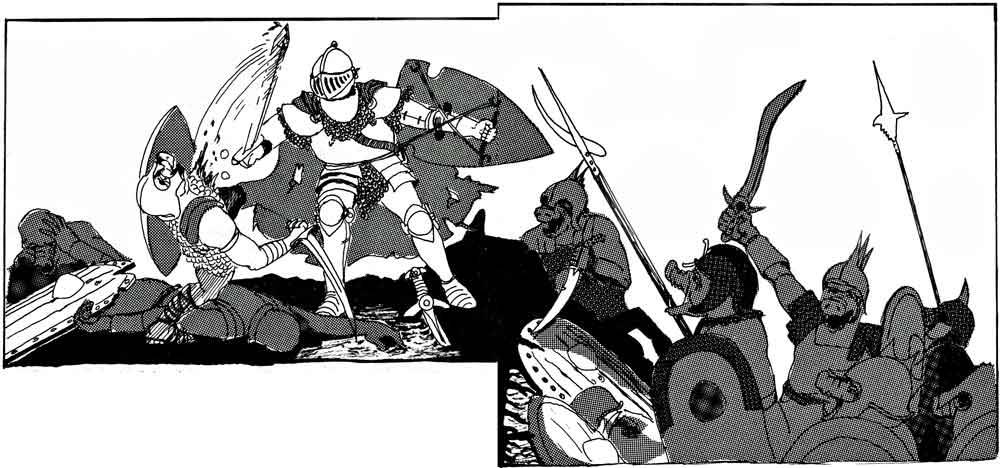
| The Paladin | - | Good Isn't Stupid | - | It's Not Easy Being Good |
| - | - | 10 Commandments | - | - |
| Dragon | - | - | - | Classes |

Paladin paradox
Dear Editor:
I would like to comment on Carl Parlagreco’s
alignment chart in the June TD,
where the use of
poison and the attacking of unarmed foes is shown
as a function of alignment.
It seems to me that these actions would depend
on the individual’s chivalry rather than his alignment;
it is perfectly possible to have an intensely
evil person who would follow the code of chivaly
to the letter. or a paladin who feels that he can most
effectively combat evil by never placing himself at
risk-poisoning a tribe of orcs would probably save
the lives of good creatures, which is what paladins
are for (isn’t it?).
Other than that, I’ve found the alignment list
very helpful when trying to explain the pros and
cons of alignments to my players, and to clarify
them to myself.
Robert Plamondon—OR
(The Dragon #31)
It is impossible for paladins
to do the type of
despicable deed you describe and still retain exalted
status.
While no one likes to be typed or pigeonholed,
it is done every day by sociologists, psychiatrists
and the like, not to mention all of the personal
pigeonholing we all engage in as a product of our
own individual biases. We pigeonhole these persons
by laws and classifications that we perceive to
exist, which makes it easier for us to relate to, and
deal with, the multitudinous impressions assaulting
our senses at any given moment.
A game must have rules and strictures within
which it can function, so that all of the participants
have an equal perception of acceptable endeavor.
The DM must supply all of the flesh and muscles
around the skeleton of the rules. The game system
itself can only provide the framework upon which
the flesh and muscles are arranged. By design, the
skeleton limits certain actions; i.e., our elbow configuration
only allows certain arm movements.
Consider certain behavior patterns as joint configurations:
each only does certain things.
Many behavorial strictures are not written laws,
but moral values applied by society. If the words
“good” and “evil” are to have any recognizable
meaning we must apply contemporary values, and
extrapolate them into our ideal; i.e., our fantasy
worlds. “Good” people do not resort to deceit and
trickery, because society does not perceive that as
“good” behavior.
An intrinsically “evil” person would never follow
a code of chivalry that perceived the concept of
“chivalry” in the same vein as the societal perception.
All of the celebrated “codes of chivalry” that
have been so romanticized in our literature dictated
a lifestyle that followed the societal perception of
"good.” True, there were oath-breakers and
miscreants, but they inevitably met with disfavor,
ostracism or even worse, and were not considered
to be living by the “code.”
To allow the DM to deal with the characters
populating his world, he must be able to “pigeonhole”
them. In this instance, the behavior patterns
exhibited mandate the classification.
—ED.
(Tim Kask)
(The Dragon #31)
* * * *